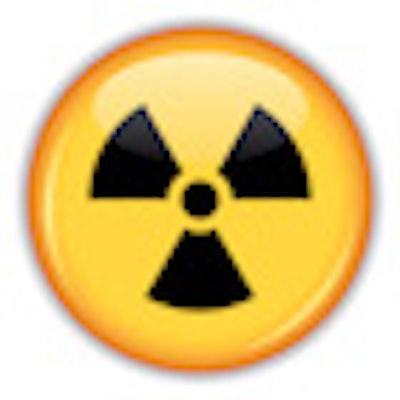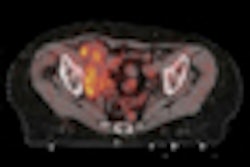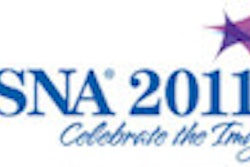
CHICAGO - A German expert voiced grave concern at this week's RSNA 2011 congress about whether diagnostic reference levels for nuclear medicine are having any real impact on routine clinical practice.
Even five years after the publication of nuclear medicine diagnostic reference levels (DRLs) many sites do not follow the guidelines, said Markus Borowski, PhD, from the medical physics department at Klinikum Braunschweig in Germany.
In the multicenter study of 48 sites in Germany, the researchers collected data from 370,000 exams in the years 2007 and 2008. The data were compared with those of a former study for the years 1996 to 2000.
Fewer diagnostic procedures were performed than in previous studies, with thyroid, skeleton, and myocardium exams accounting for more than 80% of all examinations. The frequency of kidney and lung diagnostics decreased by more than a factor of two while whole-body PET and sentinel lymph node diagnostics increased in frequency by more than a factor of 2.5.
Despite the changes in frequency, the applied activity is not in conformance with the DRLs. Some exams, such as for the thyroid, were below DRLs, while others, such as for the kidney, were above.
"As I said in advance [the reference levels] should not vary by more than 10%, and you find here a couple of sites that differ by more than 30%," Borowski said. "It becomes obvious that differences in applied activity are not compensated by other examination parameters, like examination time, to ensure a constant image quality."
The concept of DRLs in nuclear medicine should be reviewed and possibly adapted, he concluded.
Radiation risk to patients
Also in the same session, a U.K. researcher discussed who is most at risk for cancer from radiation and what radiation dose is like now compared with previous years.
Radiation risk to patients is commonly derived from assessed values of effective dose by inappropriately using nominal risk coefficients garnered from the International Commission on Radiological Protection (ICRP) for the purposes of radiological protection. The effective dose is used in relation to uniform whole-body irradiation of a whole population of all ages and both sexes, according to Paul Shrimpton, PhD, from the Health Protection Agency in Chilton, U.K.
During his first scientific session, he presented estimates of lifetime risk of cancer induction, as a function of patient age and sex that have been determined using the detailed risk models described by ICRP in 2007. He also presented typical organ doses for common x-ray exams derived by Monte Carlo calculation from patient dose data obtained in recent surveys of U.K. radiology practices. Corresponding values of effective dose were used to derive age/sex/examination-specific risk coefficients.
Generally, women were found to have a higher risk of developing cancer from radiation. However, it's not necessary to break out the risk for an individual patient -- for most types of x-ray exams, a single set of age- and sex-dependent risk coefficients provides an adequate approximation of cancer risk.
However, specific sets of coefficients may be more appropriate for a few particular types of x-ray exams in which organs show an exceptional sensitivity to radiation-induced cancer, such as the esophagus, Shrimpton said. Typical cancer risks ranged from less than 10-9 for x-rays of the knee or foot, to 10-3 for CT of the whole trunk of a young girl.
"It's sufficient to group assessment in broad general categories from negligible risk to low risk," he said.
In his next session, Shrimpton reported the frequency of diagnostic x-ray exams and the resulting per caput dose in the U.K. have steadily risen in the last 30 years. The estimated total of 46 million medical and dental x-ray exams for the U.K. in 2008 was approximately 10% higher than similar data for 1997. However, the increase in CT exams was by 140%. In addition, the annual effective dose per U.K. inhabitant from diagnostic x-rays was 0.40 mSv, an increase by 23% since 1997 -- CT accounted for 68% of the total exposure.
As far as the exposure to man-made ionizing radiation, medical and dental x-rays accounted for more than 90% of the U.K.'s exposure to man-made sources. However, the man-made sources of radiation only contributed 15% to the exposure of all sources.
"It's about 2.7 mSv per person per year," he said. Even with the rise in exams, the U.K. still has low levels of radiation compared to other countries. In the U.S., the exposure is twice as high, he noted.



















